In-depth analysis of the efficacy and function of ginkgo biloba
Ginkgo fruit, also known as ginkgo, ginkgo contains hydrocyanic acid toxin, the toxicity is very strong, the toxicity is reduced after heat, so raw food is more likely to be poisoned. The general dose of poisoning is 10-50 tablets, and the poisoning symptoms occur 1-12 hours after eating ginkgo. In order to prevent ginkgo poisoning, it is not appropriate to eat more ginkgo raw. So, what are the effects and effects of ginkgo fruits?
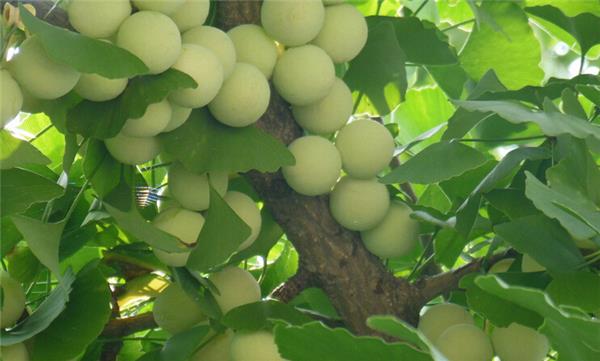
Cosmetic effect of Ginkgo biloba:
1. Whitening: with the increase of age and the influence of the external environment, the oxygen free radicals in the body gradually increase, which will lead to the deficiency of superoxide dismutase (SOD), resulting in the oxidation reaction between too many oxygen free radicals and dermal cells, resulting in chloasma or pregnancy spot. The flavonoids in ginkgo biloba leaves can hinder the formation and composure of pigment in the dermis and achieve the role of whitening skin and preventing pigment plaques. In addition to flavonoids, trace elements such as zinc, manganese and molybdenum in ginkgo biloba leaves can also scavenge oxygen free radicals and inhibit the growth of melanin.
two。 Wrinkle removal: a complete renewal of the human skin takes about 3 months, and there are small fine lines on the face. the reason is that the new cells formed by the dermis are oxidized by too much free radicals before they reach the surface of the skin. when it reaches the epidermis, it is already an aging cell. Flavonoid glycosides and flavonol in ginkgo biloba leaves are scavengers of free radicals, which can protect dermal cells, improve blood circulation and prevent cells from being oxidized to produce wrinkles.
3. Ginkgo biloba and free radicals: ginkgo biloba is one of the herbs with the ability to resist active genes. Ginkgo biloba is very effective in protecting lipids (components of cell membranes) from free radicals. Considering that brain cells contain the highest concentration of unsaturated fatty acids in all cells, this strongly supports the protective effect of ginkgo biloba on the central nervous system. Free radicals in the brain and nervous system are widely believed to be the main cause of accelerated aging. Ginkgo plays multiple roles in protecting cells, especially brain cells. First, it promotes blood circulation and the transport of oxygen and glucose to cells; second, when free radicals threaten cells, ginkgo biloba can protect cells from damage and clear free radicals out of the body.
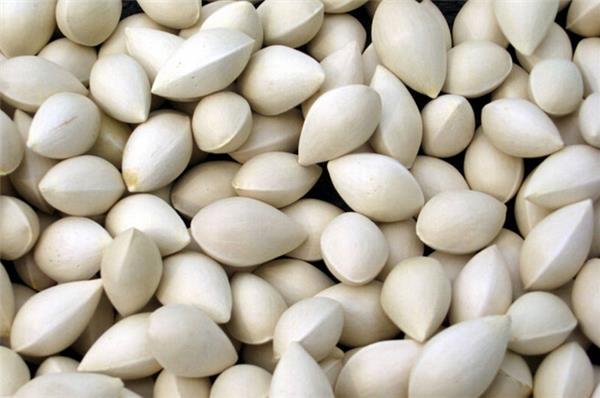
The efficacy and function of ginkgo
Taste sweet, slightly bitter, astringent, warm, slightly poisonous. It can warm the lung and replenish qi, stabilize asthma and cough, shrink stool, stop belt stagnation, stop diarrhea, and benefit the spleen.
1. Anti-aging
Ginkgo biloba also has the effects of patency of blood vessels, improving brain function, delaying brain aging, enhancing memory ability, treating Alzheimer's disease and insufficient cerebral blood supply, and the ability of anti-aging. Science has a great influence in Germany and France.
two。 Protect the liver
Ginkgo biloba can also protect the liver, reduce arrhythmia, prevent fatal bronchoconstriction in allergic reactions, and can also be used to deal with asthma, transplant rejection, myocardial infarction, stroke, organ protection and dialysis.
3. Prevention and treatment of cardiovascular disease
Flavonoid glycosides and bitter lipids in seed kernels also have special preventive and therapeutic effects on cerebral thrombosis, senile dementia, hypertension, hyperlipidemia, coronary heart disease, arteriosclerosis, brain dysfunction and other diseases.
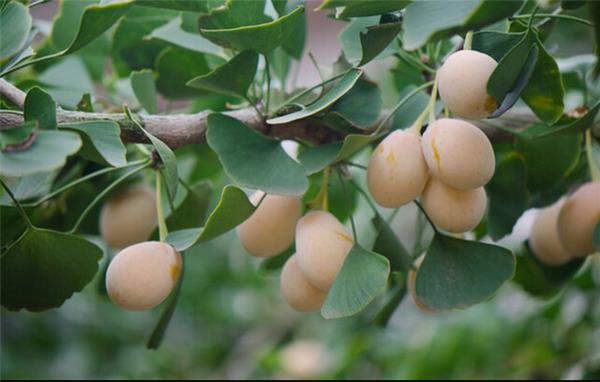
Ginkgo nuts contain a variety of nutritional elements, in addition to starch, protein, fat, sugars, but also contains vitamin c, riboflavin, carotene, calcium, phosphorus, iron, potassium, magnesium and other trace elements, as well as ginkgolic acid, ginkgo phenol, five-carbon polysaccharides, liposterols and other ingredients. It has dietotherapy and medical effects, such as tonifying lung qi, treating cough and asthma, relieving worms, reducing stool, smoothing wrinkles, protecting blood vessels, increasing blood flow and so on. Its toxic ingredient is ginkgo phenol. So, what are the edible methods of ginkgo fruit?
1. Salt and pepper ginkgo biloba:
Practice:
Take a plate of ginkgo with shell, stir-fry with salt and pepper and ginkgo in a pan until cooked, then remove the shell and eat.
Stir-fry and eat while it is hot. Hot food is delicious and fragrant, while cold food is dry and bitter. When entertaining guests, one plate per table, 150-200 grams is appropriate.
two。 Deep-fried ginkgo biloba:
Practice:
Take a plate of ginkgo biloba with shell, wrap it in a thin edible plastic bag, deep-fry it in microwave oven for a few minutes, then shell it while it is hot.
3. Ginkgo porridge:
Tonifying the vital energy, tonifying the five internal organs, anti-aging, especially for the elderly, weak and sick. Normal people eat healthy body. Suitable for family consumption.
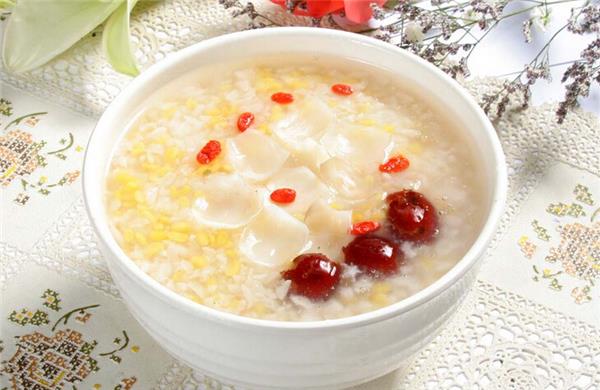
Practice:
Ginkgo kernels (scald the inner seed coat with boiling water after shelling) 6-10, a small amount of rock sugar, 2 taels of japonica rice, the right amount of water, at the same time, put into the pot, simmer and cook. It can be made into a paste of japonica rice.
Ginkgo should be matched with other sweet and low-sugar rice porridge, such as ginkgo Babao porridge, ginkgo Congee with Mung Bean Congee, ginkgo sand ginseng lotus seed porridge and so on.
Ginkgo is a nutritious high-level tonic, which contains crude protein, crude fat, reducing sugar, nucleoprotein, minerals, crude fiber and a variety of vitamins. So, what is the nutritional value of ginkgo fruit?
According to the scientific conclusion: every 100g fresh ginkgo contains 13.2 g protein, 72.6 g carbohydrates and 1.3 g fat, and contains vitamin C, riboflavin, carotene, calcium, phosphorus, iron, selenium, potassium, magnesium and other trace elements, 8 kinds of amino acids, which has high edible value, medicinal value, health care value and magical effect on human health.
Ginkgo nuts contain a variety of nutritional elements, in addition to starch, protein, fat, sugars, but also contains vitamin c, riboflavin, carotene, calcium, phosphorus, iron, potassium, magnesium and other trace elements, as well as ginkgolic acid, ginkgo phenol, five-carbon polysaccharides, liposterols and other ingredients. It has dietotherapy and medical effects, such as tonifying lung qi, treating cough and asthma, relieving worms, reducing stool, smoothing wrinkles, protecting blood vessels, increasing blood flow and so on. According to modern medical research, ginkgo biloba also has the effects of patency of blood vessels, improving brain function, delaying brain aging, enhancing memory ability, treating Alzheimer's disease and insufficient cerebral blood supply, and the ability of anti-aging. Science has a great influence in Germany and France. In addition, ginkgo biloba can protect the liver, reduce arrhythmia, prevent fatal bronchoconstriction in allergic reactions, and can also be used to deal with asthma, transplant rejection, myocardial infarction, stroke, organ protection and dialysis.
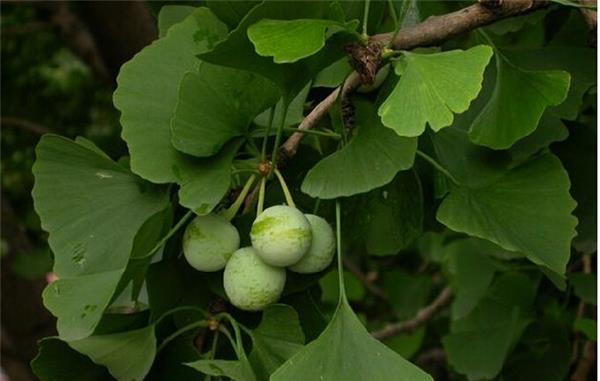
The editor concluded: the above is the introduction of the efficacy and role of ginkgo fruits. I hope this article can help you better understand ginkgo fruits and better eat ginkgo fruits.
The right amount of water, at the same time into the pot, simmer to cook. It can be made into a paste of japonica rice.
Ginkgo should be matched with other sweet and low-sugar rice porridge, such as ginkgo Babao porridge, ginkgo Congee with Mung Bean Congee, ginkgo sand ginseng lotus seed porridge and so on.
Ginkgo is a nutritious high-level tonic, which contains crude protein, crude fat, reducing sugar, nucleoprotein, minerals, crude fiber and a variety of vitamins. So, what is the nutritional value of ginkgo fruit?
According to the scientific conclusion: every 100g fresh ginkgo contains 13.2 g protein, 72.6 g carbohydrates and 1.3 g fat, and contains vitamin C, riboflavin, carotene, calcium, phosphorus, iron, selenium, potassium, magnesium and other trace elements, 8 kinds of amino acids, which has high edible value, medicinal value, health care value and magical effect on human health.
Ginkgo nuts contain a variety of nutritional elements, in addition to starch, protein, fat, sugars, but also contains vitamin c, riboflavin, carotene, calcium, phosphorus, iron, potassium, magnesium and other trace elements, as well as ginkgolic acid, ginkgo phenol, five-carbon polysaccharides, liposterols and other ingredients. It has dietotherapy and medical effects, such as tonifying lung qi, treating cough and asthma, relieving worms, reducing stool, smoothing wrinkles, protecting blood vessels, increasing blood flow and so on. According to modern medical research, ginkgo biloba also has the effects of patency of blood vessels, improving brain function, delaying brain aging, enhancing memory ability, treating Alzheimer's disease and insufficient cerebral blood supply, and the ability of anti-aging. Science has a great influence in Germany and France. In addition, ginkgo biloba can protect the liver, reduce arrhythmia, prevent fatal bronchoconstriction in allergic reactions, and can also be used to deal with asthma, transplant rejection, myocardial infarction, stroke, organ protection and dialysis.

The editor concluded: the above is the introduction of the efficacy and role of ginkgo fruits. I hope this article can help you better understand ginkgo fruits and better eat ginkgo fruits.
- Prev

Planting methods of flower-leaf canna planting techniques of flower-leaf canna
Planting methods of flower-leaf canna planting techniques of flower-leaf canna
- Next

What are the nutritional values and therapeutic values of Flammulina velutipes?
What are the nutritional values and therapeutic values of Flammulina velutipes?
Related
- Wuhan Hospital Iron Tree Blooming Result Was Instantly Frightened by the Gardener Master
- Which variety of camellia is the most fragrant and best? Which one do you like best?
- What is the small blue coat, the breeding methods and matters needing attention of the succulent plant
- Dormancy time and maintenance management of succulent plants during dormancy
- Minas succulent how to raise, Minas succulent plant pictures
- What are the varieties of winter succulent plants
- How to raise succulent plants in twelve rolls? let's take a look at some experience of breeding twelve rolls.
- Attention should be paid to water control for succulent plants during dormant period (winter and summer)
- Watering experience of twelve rolls of succulent plants
- Techniques for fertilizing succulent plants. An article will let you know how to fertilize succulent plants.

